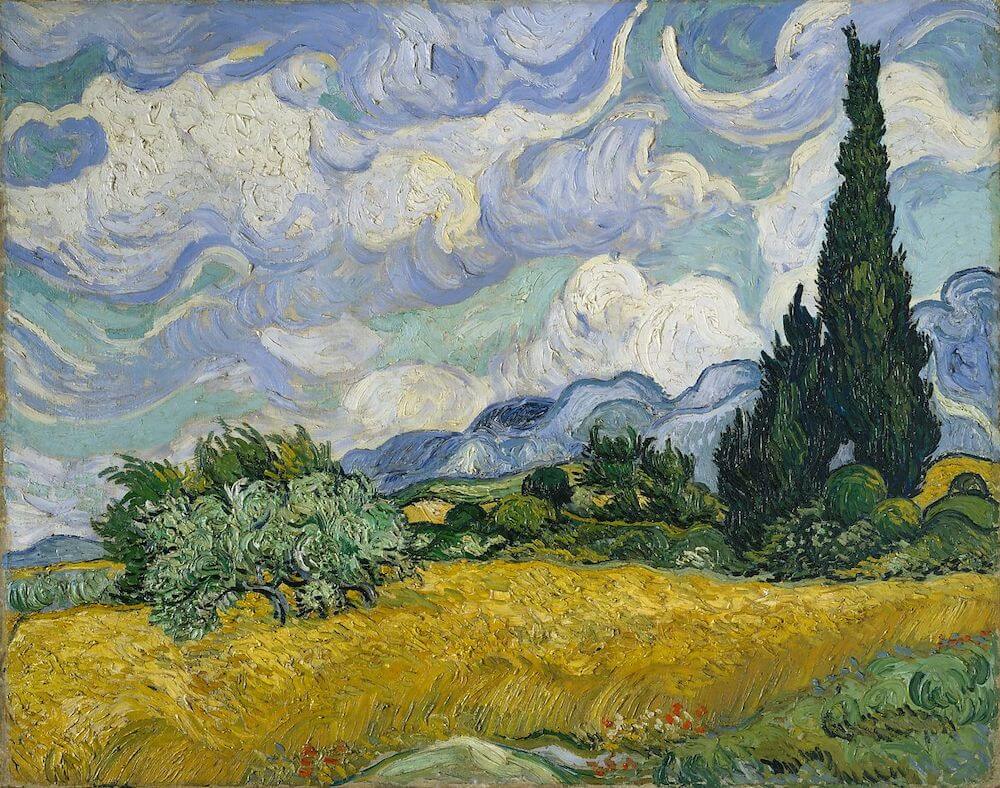Wheat Field With Cypresses, 1889 by Vincent Van Gogh

Although restless beyond measure, with few straight lines, this landscape is one of the most classic in conception among Van Gogh's works. It is build up in great bands that traverse the entire space. The tall dark cypress trees at one side offer a powerful contrast to the prevailing horizontals, which they resemble in form. The oppositions of warm and cool, the proportioning of parts, the relative height of sky and earth on the two sides, the horizontal intervals which we can measure on the silhouette of the distant mountain, twice broken by trees - all these are perfectly legible and well balanced.
It is a landscape in which the painter's perceptions of nature and his intensity of feeling are equally pronounced. The glowing wheat field, the olive trees of subtle gray in which all the colors of the picture seem to be mingled, the shaggy wavering cypresses, and the turbulent mountains have been wonderfully observed, and the light that fills this space has a vivid actuality for our eyes. The brightness emanating from the cold sky and the warm earth is realized as much through the local colors as through the play of light and shadow - Van Gogh is free with latter, and hardly aims at consistency on this point.
the duality of sky and earth remains - the first light, soft, rounded, filled with fantasy and suggestions of animal forms, the earth firmer, harder, more intense in color, with stronger contrasts, of more distinct parts, perhaps masculine. Or one might interpret the duality as the real and of the vaguely desired and imagined. Connecting them is the single vertical, the cypress trees, as in The Starry Night, of which this painting is in other ways the diurnal counterpart.




















